
With chronic diseases on the rise it is critical to explore curative and preventative cures. Research over the nopal (opuntia ficus-indica) effects on health have shown promising results and continues to be a topic of exploration with a promising future.
Information provided is a summary of the research performed by West Camp Nopal, LLC and where available references have been identified. West Camp Nopal, LLC does not make any assertions to the findings or results presented herein. We encourage you to independently research and consult with professionals on any of the information presented to form an opinion.
“Let food be thy medicine and medicine be thy food”
Hippocrates
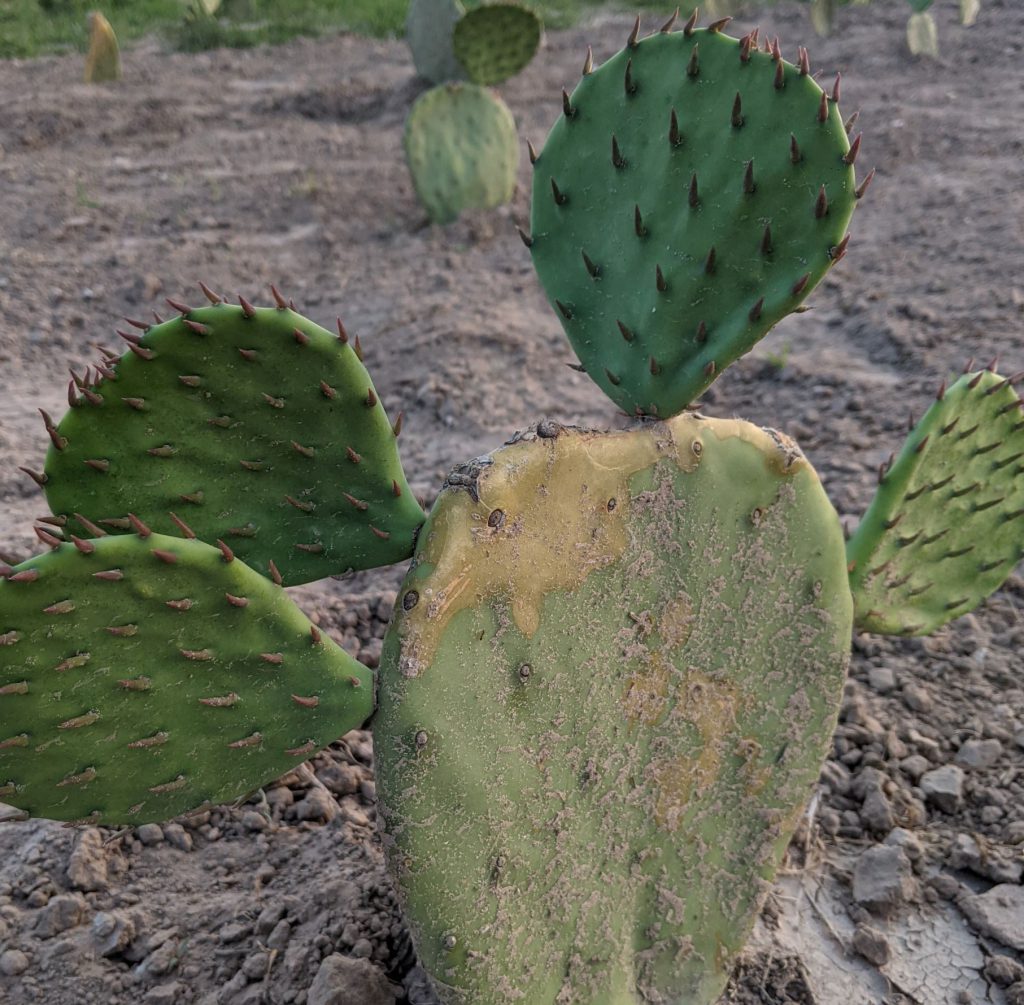
Health
With Heart Disease being the #1 cause of death in the U.S. Cactus is proven to be an untapped resource to aid in this fight.
Research supports

Lower Cholesterol
Nopal contains antioxidant and antiatherogenic (prevent plaque in arteries) properties that help reduce LDL cholesterol when regularly consumed [3]. Women affected by metabolic syndrome have also showed an increase in HDL cholesterol level, decrease in LDL cholesterol and decrease in triglycerides [4].
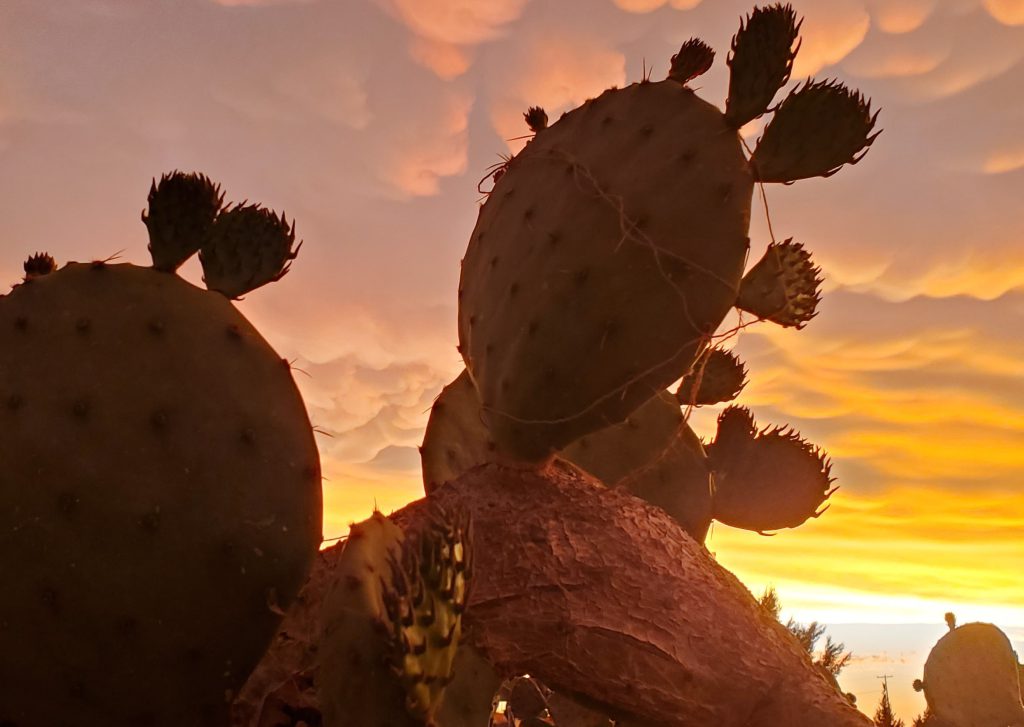
Lower Diabetes
Nopal contains antihyperglycemic and antihyperinsulinemic properties that help improve glucose and insulin levels [5]. Reduction in the absorption of glucose could be due to dietary fibers and mucilage in the nopal [6].
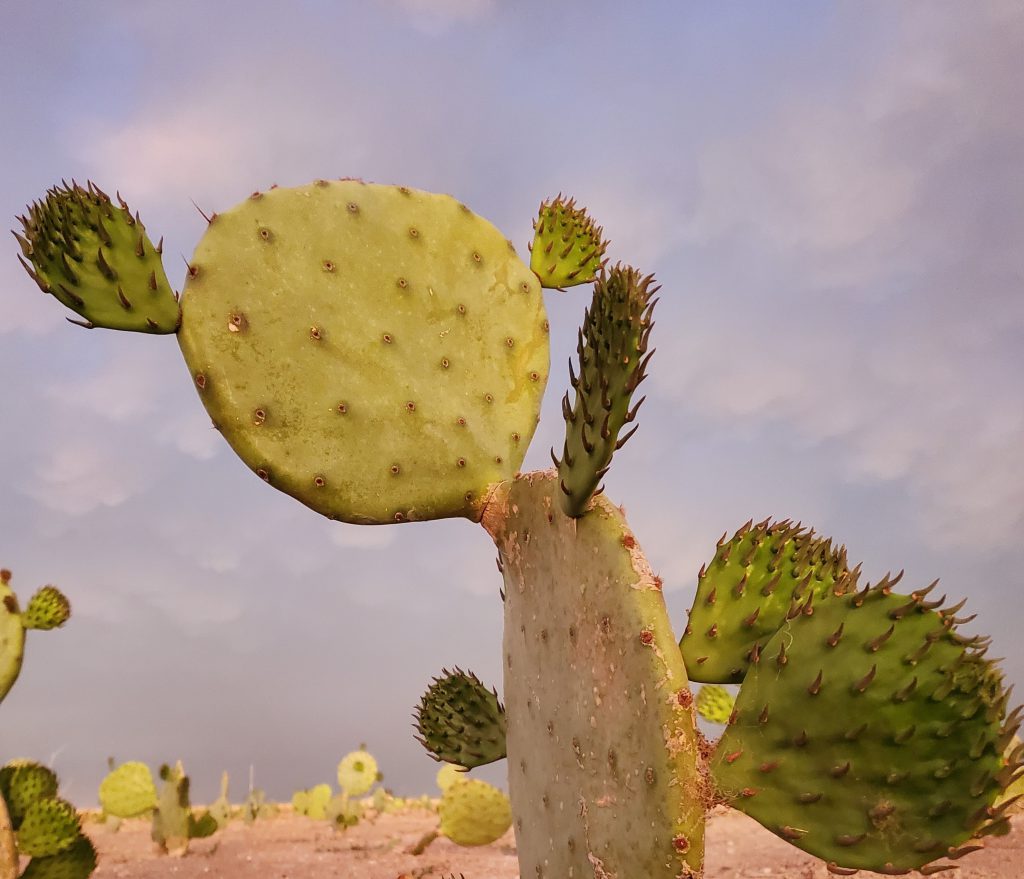
Combat Obesity
Nopal fiber binds to dietary fat which prevent it from being absorbed by the body and is instead eliminated through digestion. The reduction in dietary fat within the body results in weight loss [7]. Nopal is high in fiber and low in calories which makes individuals feel full while eating less.
*As of 2022, approximately 42% of Americans are obese
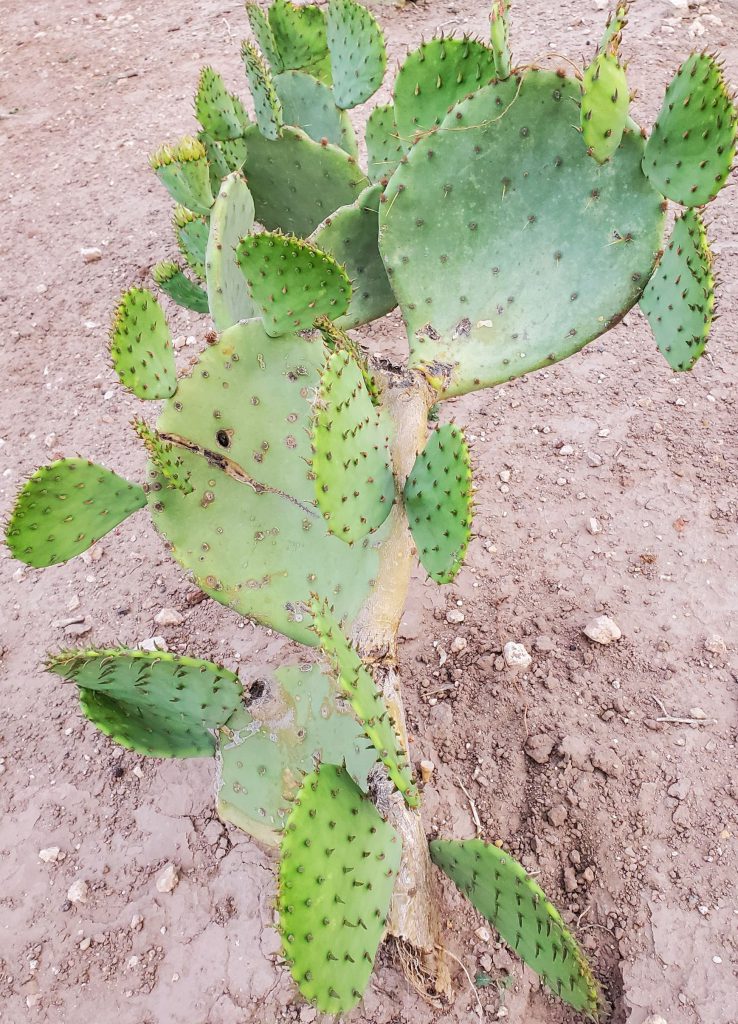
Anti-Cancer Properties
Recent studies on mice showed that cactus may suppress tumor growth [10]. Continued research is underway to further investigate this phenomenon. Cactus seed oil contain high polyphenol levels indicating anti-cancer properties. Cactus also contains Gallic acid that can fight against tumor cells from leukemia, prostate and lung cancers. [11] [12]
**Studies in this topic are new and limited. Readers should conduct independent research and exercise caution when determining associated benefits and risks.
Anti-Inflammatory
High levels of C-reactive protein (CPR) can indicate health conditions such as cancer or cardiovascular problems. Eating cactus can lower CPR and improve inflammation caused by diseases [8].
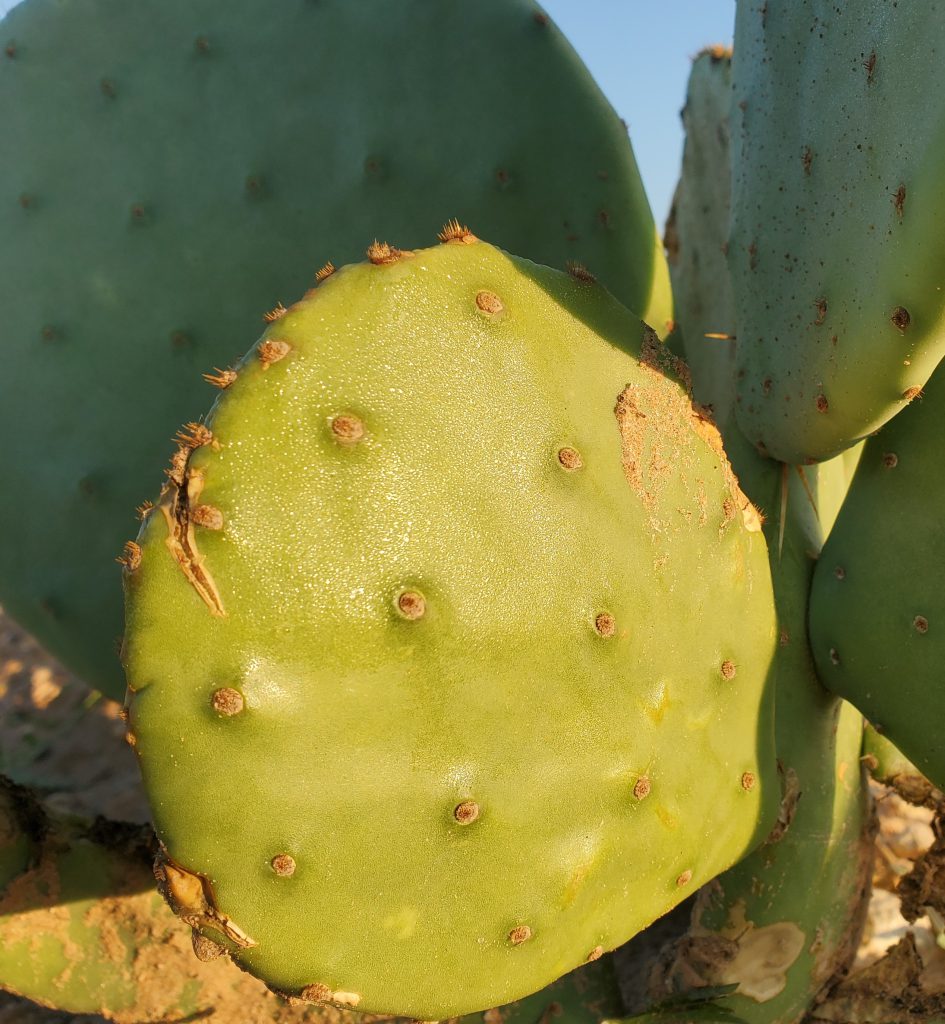
Boosts Immune System
High nutritional values in vitamins and minerals help boost the immune system. High values in vitamin C (particularly in the fruit) increases production of white blood cells that help fight diseases [9].
Uses
Ready to give it a try?
Food
Pharmaceutical Supplements
What does it taste like?
Pads
Nopales taste different depending on the method of preparation or time of the day harvested. Yes, the time of day harvested affects the taste. Harvesting in the early morning when acidity levels in the cactus are high will result in a tart taste, while harvest in the later part of the day will result in a more subtle okra-like taste.
Prickly Pear Fruit
Sweet but not overwhelming. Juicy and heavy on seeds. The seeds are hard and can either be extracted or eaten. The taste has no comparison but may be described as a cross between watermelon and a pear or strawberry.
Nutrition
| Nopales raw (pads) | Prickly Pear raw |
| Pad serving size = 1c sliced (86g) | Fruit serving size = 1c (149g) |
| Name | Amount (pad) | Unit | Amount (fruit) |
|---|---|---|---|
| Water | 80.9 | g | 131 |
| Energy | 13.8 | kcal | 61.1 |
| Protein | 1.14 | g | 1.09 |
| Carbohydrate | 2.86 | g | 14.3 |
| Fiber | 1.89 | g | 5.36 |
| Calcium | 141 | mg | 83.4 |
| Potassium | 221 | mg | 328 |
| Vitamin C | 8 | mg | 20.9 |
| Vitamin B-6 | .06 | mg | .089 |
| Thiamin | .01 | mg | .021 |
| Riboflavin | .035 | mg | .089 |
**Values from U.S. Department of Agriculture. See site for full nutritional data
References
- A. Budinsky, R. Wolfram, A. Oguogho, Y. Efthimiou, Y. Stamatopoulos, and H. Sinzinger, “Regular ingestion of Opuntia robusta lowers oxidation injury,” Prostaglandins, Leukotrienes, and Essential Fatty Acids, vol. 65, no. 1, pp. 45–50, 2001. https://doi.org/10.1054/plef.2001.0287
- E. Linarès, C. Thimonier, and M. Degre, “The effect of NeOpuntia on blood lipid parameters—risk factors for the metabolic syndrome (syndrome X),” Advances in Therapy, vol. 24, no. 5, pp. 1115–1125, 2007. https://link.springer.com/article/10.1007/BF02877717
- P. López-Romero, E. Pichardo-Ontiveros, A. Avila-Nava et al., “The effect of nopal (Opuntia ficus indica) on postprandial blood glucose, incretins, and antioxidant activity in Mexican patients with type 2 diabetes after consumption of two different composition breakfasts,” Journal of the Academy of Nutrition and Dietetics, vol. 114, no. 11, pp. 1811–1818, 2014. https://linkinghub.elsevier.com/retrieve/pii/S2212267214010211
- A. C. Frati-Munari, B. E. Gordillo, P. Altamirano, and C. R. Ariza, “Hypoglycemic effect of Opuntia streptacantha Lemaire in NIDDM,” Diabetes Care, vol. 11, no. 1, pp. 63–66, 1988. https://diabetesjournals.org/care/article/11/1/63/1446/Hypoglycemic-Effect-of-Opuntia-streptacantha
- Uebelhack R, Busch R, Alt F, Beah ZM, Chong PW. Effects of cactus fiber on the excretion of dietary fat in healthy subjects: a double blind, randomized, placebo-controlled, crossover clinical investigation. Curr Ther Res Clin Exp. 2014 Jun 21;76:39-44. doi: 10.1016/j.curtheres.2014.02.001. Erratum in: Curr Ther Res Clin Exp. 2014 Sep;76:63. PMID: 25067985; PMCID: PMC4109417. https://www.ncbi.nlm.nih.gov/pmc/articles/PMC4109417/
- Attanzio A, Tesoriere L, Vasto S, Pintaudi AM, Livrea MA, Allegra M. Short-term cactus pear [Opuntia ficus-indica (L.) Mill] fruit supplementation ameliorates the inflammatory profile and is associated with improved antioxidant status among healthy humans. Food Nutr Res. 2018 Aug 20;62. doi: 10.29219/fnr.v62.1262. PMID: 30150921; PMCID: PMC6104507. https://www.ncbi.nlm.nih.gov/pmc/articles/PMC6104507/
- El-Mostafa K, El Kharrassi Y, Badreddine A, Andreoletti P, Vamecq J, El Kebbaj MS, Latruffe N, Lizard G, Nasser B, Cherkaoui-Malki M. Nopal cactus (Opuntia ficus-indica) as a source of bioactive compounds for nutrition, health and disease. Molecules. 2014 Sep 17;19(9):14879-901. doi: 10.3390/molecules190914879. PMID: 25232708; PMCID: PMC6270776. https://pubmed.ncbi.nlm.nih.gov/25232708/
- Zou DM, Brewer M, Garcia F, Feugang JM, Wang J, Zang R, Liu H, Zou C. Cactus pear: a natural product in cancer chemoprevention. Nutr J. 2005 Sep 8;4:25. doi: 10.1186/1475-2891-4-25. PMID: 16150152; PMCID: PMC1242252. https://pubmed.ncbi.nlm.nih.gov/16150152/
- El-Mostafa K, El Kharrassi Y, Badreddine A, Andreoletti P, Vamecq J, El Kebbaj MS, Latruffe N, Lizard G, Nasser B, Cherkaoui-Malki M. Nopal cactus (Opuntia ficus-indica) as a source of bioactive compounds for nutrition, health and disease. Molecules. 2014 Sep 17;19(9):14879-901. doi: 10.3390/molecules190914879. PMID: 25232708; PMCID: PMC6270776. https://www.ncbi.nlm.nih.gov/pmc/articles/PMC6270776/
- Ahmed SB, Hamed MS, Khiralla GM, Mohamed AF. Cactus and lupin extracts as prospective anticancer agents compared with utoral drug. J Food Biochem. 2020 Aug;44(8):e13299. doi: 10.1111/jfbc.13299. Epub 2020 Jun 2. PMID: 32488919. https://pubmed.ncbi.nlm.nih.gov/32488919/
- ShiZing, Chen, Wang Bo, Li Qubo, Xin-Hao Yi, Zhao Xue and Zhang Cui-li. “Cactus extract for superficial II degree burns.” Progress in Modern Biomedicine 10 (2010): 4234-4237. https://www.semanticscholar.org/paper/Cactus-extract-for-superficial-II-degree-burns.-ShiZing-Bo/85ce5549378e0f4c31c70f0790d9d50b8d59aee2
- Wiese J, McPherson S, Odden MC, Shlipak MG. Effect of Opuntia ficus indica on symptoms of the alcohol hangover. Arch Intern Med. 2004 Jun 28;164(12):1334-40. doi: 10.1001/archinte.164.12.1334. PMID: 15226168. https://pubmed.ncbi.nlm.nih.gov/15226168/